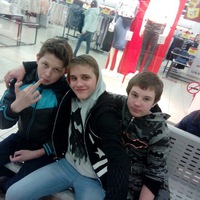
1)В начале 20 века Жезканганские медные залежи,железный рудник урочища Ескуль ,каменноугольное
месторождение Карсакпай были проданы предпринимателям из:а)США в) Япониис)Англии д)Бельгии Е)Китая 2) Алфавит этого языка сменялся несколько за всю историю его существования :использовались руническое и арабское письмо,латиница и кириллица. Укажите этот язык .а)русский язык б) турецкий язык в)уйгурский язык д) казахский язык г) монгольский язык 0
0
 0
0
Ответы на вопрос
 Внимание! Ответы на вопросы дают живые люди. Они могут содержать ошибочную информацию, заблуждения, а также ответы могут быть сгенерированы нейросетями. Будьте внимательны. Если вы уверены, что ответ неверный, нажмите кнопку "Пожаловаться" под ответом.
Внимание! Ответы на вопросы дают живые люди. Они могут содержать ошибочную информацию, заблуждения, а также ответы могут быть сгенерированы нейросетями. Будьте внимательны. Если вы уверены, что ответ неверный, нажмите кнопку "Пожаловаться" под ответом.

2-в
...............................
 0
0
 0
0

Answer in detail. 1) At the beginning of the 20th century, the Jezkazgan copper deposits, the iron ore deposit of the Eskul tract, and the Karsakpay coal deposit were sold to entrepreneurs from: a) USA b) Japan c) England d) Belgium e) China 2) The alphabet of this language changed several times throughout its history: runic and Arabic script, Latin and Cyrillic were used. Name this language. a) Russian language b) Turkish language c) Uyghur language d) Kazakh language e) Mongolian language
Here are my answers:
1) According to the sources, the Jezkazgan copper deposits, the iron ore deposit of the Eskul tract, and the Karsakpay coal deposit were sold to entrepreneurs from Belgium . The Belgian company Société Anonyme des Mines du Kargaly acquired the rights to these deposits in 1905 and operated them until 1917. The company was founded by Baron Edouard Empain, a prominent Belgian industrialist and financier. 2) The language that changed its alphabet several times throughout its history is the Turkish language . The Turkish language belongs to the Turkic language family and is spoken by about 80 million people mainly in Turkey and some neighboring countries. The Turkish language used the runic script from the 8th to the 10th centuries, the Arabic script from the 10th to the 20th centuries, the Latin script from the 20th century to the present, and the Cyrillic script in some regions of the former Soviet Union from the 20th to the 21st centuries. The current Turkish alphabet is based on the Latin script and has 29 letters.
 0
0
 0
0
Топ вопросов за вчера в категории История
Последние заданные вопросы в категории История
-
Математика
-
Литература
-
Алгебра
-
Русский язык
-
Геометрия
-
Английский язык
-
Химия
-
Физика
-
Биология
-
Другие предметы
-
История
-
Обществознание
-
Окружающий мир
-
География
-
Українська мова
-
Информатика
-
Українська література
-
Қазақ тiлi
-
Экономика
-
Музыка
-
Право
-
Беларуская мова
-
Французский язык
-
Немецкий язык
-
МХК
-
ОБЖ
-
Психология
-
Физкультура и спорт
-
Астрономия
-
Кыргыз тили
-
Оʻzbek tili




















